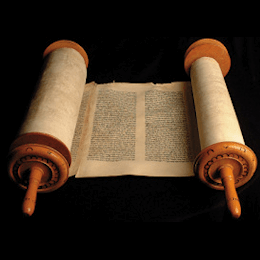Textus Receptus Bibles
Masoretic Text 1524
Old Testament
| 60:1 | למנצח על שׁושׁן עדות מכתם לדוד ללמד׃ (60:2) בהצותו את ארם נהרים ואת ארם צובה וישׁב יואב ויך את אדום בגיא מלח שׁנים עשׂר אלף׃ (60:3) אלהים זנחתנו פרצתנו אנפת תשׁובב |
| 60:2 | (60:4) הרעשׁתה ארץ פצמתה רפה שׁבריה כי מטה׃ |
| 60:3 | (60:5) הראיתה עמך קשׁה השׁקיתנו יין תרעלה׃ |
| 60:4 | (60:6) נתתה ליראיך נס להתנוסס מפני קשׁט סלה׃ |
| 60:5 | (60:7) למען יחלצון ידידיך הושׁיעה ימינך ועננו׃ |
| 60:6 | (60:8) אלהים דבר בקדשׁו אעלזה אחלקה שׁכם ועמק סכות אמדד׃ |
| 60:7 | (60:9) לי גלעד ולי מנשׁה ואפרים מעוז ראשׁי יהודה מחקקי׃ |
| 60:8 | (60:10) מואב סיר רחצי על אדום אשׁליך נעלי עלי פלשׁת התרעעי׃ |
| 60:9 | (60:11) מי יבלני עיר מצור מי נחני עד אדום׃ |
| 60:10 | (60:12) הלא אתה אלהים זנחתנו ולא תצא אלהים בצבאותינו׃ |
| 60:11 | (60:13) הבה לנו עזרת מצר ושׁוא תשׁועת אדם׃ |
| 60:12 | (60:14) באלהים נעשׂה חיל והוא יבוס צרינו׃ |

Masoretic Text 1524
The Hebrew text of the Old Testament is called the Masoretic Text because in its present form it is based upon the Masora—the Hebrew, textual tradition of the Jewish scholars known as the Masoretes (or Masorites). The Masoretes were rabbis who made it their special work to correct the faults that had crept into the text of the Old Testament during the Babylonian captivity, and to prevent, for the future, its being corrupted by any alteration. They first separated the apocryphal from the canonical books, and divided the latter into twenty-two books, being the number of letters in the Hebrew alphabet. Then they divided each book into sections and verses.
There is a great difference of opinion as to when the Masoretic Text was written, but it was probably accomplished in the 10th -11th century. Several editions existed, varying considerably, but the received and authoritative text is that of Jacob ben-chayim ibn Adonijah, who carefully sifted and arranged the previous works on the subject. It was published in 1524.